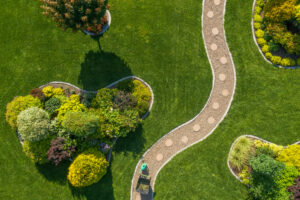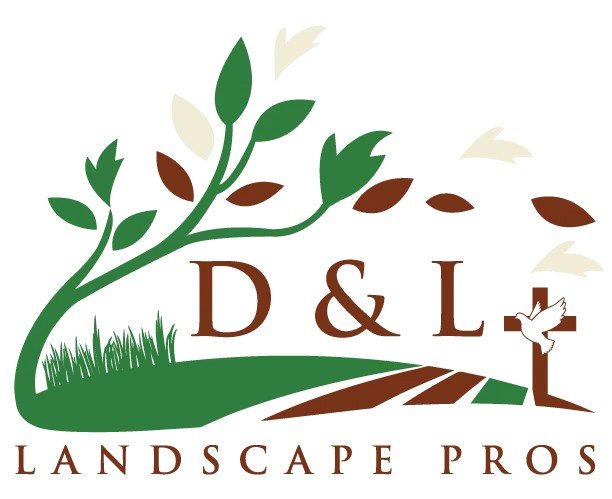Introduction
When it comes to creating a captivating outdoor space, understanding the interplay between hardscape and softscape is crucial.
Achieving the perfect balance between these two elements can significantly enhance the beauty and functionality of your landscape.
In this guide, we delve into the nuances of hardscaping and softscaping, uncovering the key differences, benefits, and design strategies to help you craft a harmonious outdoor environment that complements the unique charm of Monroe, South Charlotte, Indian Trail, Pineville, Weddington, Waxhaw, and Matthews.
What is a Hardscape?
Hardscape constitutes the solid, inanimate components of your landscape design, such as pathways, patios, and retaining walls.
By incorporating sturdy materials like stone, concrete, and wood, you can create a durable and visually appealing foundation for your outdoor space. The inclusion of hardscaping elements not only adds structural integrity but also enhances the overall value of your property.
What is a Softscape?
Contrasting with hardscape, softscape refers to the living, horticultural aspects of your landscape, including plants, flowers, and trees. Introducing lush greenery and vibrant floral arrangements can infuse life and texture into your outdoor setting, fostering a serene and inviting atmosphere that complements the natural allure of your surroundings.
Hardscape vs. Softscape: The Key Differences
The debate between hardscape and softscape often revolves around the contrasting characteristics of their materials and functions. While hardscape offers durability and structure, softscape brings vibrancy and natural beauty to your outdoor space.
Understanding these distinctions is crucial in making informed decisions regarding the composition of your landscape.

Benefits of Finding the Right Balance
Finding the perfect equilibrium between hardscape and softscape in your area offers a myriad of benefits that go beyond the visual appeal.
Enhanced Aesthetic Appeal:
A well-balanced landscape design creates a visually stunning outdoor environment that harmonizes with the natural beauty of your area, amplifying the overall curb appeal and property value.
Functional Versatility:
The strategic integration of hardscape and softscape elements promotes functional versatility, allowing for various outdoor activities, entertainment, and relaxation while maximizing the use of the outdoor space throughout the year.
Sustainable Landscape Management:
By selecting regionally appropriate hardscape and softscape components, homeowners can establish a sustainable and environmentally friendly landscape that requires minimal water consumption and maintenance, contributing to water conservation and ecological balance.
Increased Property Resilience:
A harmonious blend of hardscape and softscape can enhance the resilience of the property by minimizing soil erosion, managing water runoff, and creating a stable foundation that withstands the impacts of changing weather conditions and natural elements over time.
Achieving Balance: Design Tips for a Harmonious Landscape
Creating a well-balanced landscape involves careful planning and thoughtful execution. Here are some essential design tips to help you achieve harmony between hardscape and softscape in your outdoor space:
1. Integrating Hardscape and Softscape for a Cohesive Design
Blending hardscape and softscape seamlessly can create a cohesive visual appeal that transforms your outdoor area into a unified and inviting sanctuary.
2. Utilizing Hardscape and Softscape to Complement Each Other
Strategic placement of hardscape and softscape elements can create a complementary relationship that highlights the unique characteristics of each component, enhancing the overall aesthetic and functionality of your landscape.
3. Ensuring Sustainability and Maintenance Ease
Selecting low-maintenance plants and incorporating eco-friendly hardscape materials can ensure sustainable landscape management while reducing the need for extensive upkeep and conservation efforts.
Hardscaping and Softscaping Best Practices
Are you a homeowner in Monroe? South Charlotte? Indian Trai?, Pineville? Weddington? Waxhaw? Or Matthews? Then, implementing these right hardscaping and softscaping techniques is essential to create outdoor spaces that thrive in the local climate and soil conditions. Here are some tailored best practices:
Customized Solutions for Your Location
Adapting your landscape design to the unique characteristics of your area can help you create a personalized outdoor environment that resonates with the local aesthetics and environmental requirements.
Adapting to Local Climate and Soil Conditions
Understanding the nuances of your location’s climate and soil composition is crucial in selecting the appropriate plant species and hardscape materials that can thrive and withstand the challenges posed by the regional environment.
Showcasing Local Examples of Well-Balanced Landscapes
Exploring successful landscape design projects in your area, and some other different ones can provide you with valuable insights and inspiration to guide your own hardscaping and softscaping endeavors.
Conclusion
In the realm of landscape design, achieving the perfect balance between hardscape and softscape is a transformative art.
By embracing the unique characteristics of your area whether you’re in Monroe? South Charlotte? Indian Trai? Pineville? Weddington? Waxhaw? Or Matthews and implementing the right design strategies, you can create an outdoor sanctuary that not only captivates the eye but also stands the test of time, enriching your living experience and adding value to your property.
FAQs
1. What is the difference between landscape and softscape?
Landscape refers to the overall visible features of an area of land, including the physical elements such as terrain, landforms, and structures, as well as the living elements like plants and flowers.
Softscape, on the other hand, specifically refers to the horticultural aspects of the landscape, encompassing plants, flowers, shrubs, trees, and other organic materials that add texture, color, and life to the outdoor space.
2. What is an example of a softscape?
A prime example of softscape includes the various types of plants and trees in a garden, such as ornamental grasses, flowering shrubs, perennial flowers, and lush green lawns. These elements contribute to the natural beauty and visual appeal of the landscape.
3. What is an example of a hardscape?
An example of hardscape comprises non-living elements incorporated into the landscape design, such as stone pathways, wooden decks, concrete patios, retaining walls, or decorative fountains. These elements provide structure, functionality, and visual interest to the outdoor space.
4. Is hardscaping a benefit to a garden?
Hardscaping offers several benefits to a garden, including providing structure and organization to the outdoor space, creating defined areas for various activities, reducing erosion, improving drainage, and minimizing the need for extensive maintenance. Additionally, hardscaping elements like pathways and patios can enhance accessibility and usability, allowing for easier navigation and increased outdoor enjoyment.
5. What is the purpose of a hardscape?
The primary purpose of hardscape is to introduce durable and functional elements into the landscape design that can withstand the elements and provide structure, organization, and aesthetic appeal to the outdoor space. Hardscape elements serve as the foundational framework that complements and enhances the overall design, creating a balanced and harmonious environment for various activities and visual enjoyment.




